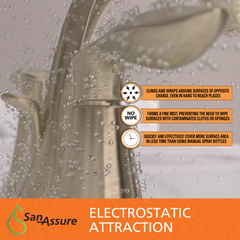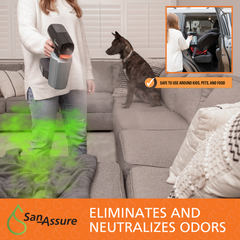

The Growing Threat of Antibiotic Resistance in Agriculture and Its Impact on Human Health
Antibiotics have revolutionized modern medicine, enabling us to combat infectious diseases and perform life-saving procedures. However, the misuse of antibiotics, particularly in the agricultural sector, poses a significant risk to human health. This article delves into the origins of antibiotic resistance, its alarming consequences, and explores potential solutions to combat this global threat.
Understanding Antibiotics:
Antibiotics are chemicals designed to inhibit the growth of bacteria. Unfortunately, some bacteria have developed resistance to existing antibiotics, while the discovery of new ones has significantly declined. Alexander Fleming, who discovered penicillin, cautioned about bacterial resistance in the 1940s, and his concerns have become a harsh reality. As antibiotics became less profitable for pharmaceutical companies, the pursuit of new antibiotics diminished, exacerbating the crisis.
The Emergence of Antibiotic Resistance:
The development of antibiotic resistance occurs when bacteria can no longer be effectively controlled by previously successful treatments. This phenomenon affects both humans and animals, leading to an increase in infections that are harder to treat, prolonged illnesses, higher mortality rates, and augmented treatment costs. Moreover, bacteria have the ability to transmit resistance genes, making the problem even more pervasive and challenging to tackle.
The Agricultural Sector's Role:
While antibiotic resistance is often associated with hospitals, the agricultural sector is, in fact, the largest consumer of antibiotics worldwide. Antibiotics are widely used not only to treat and prevent infections in livestock but also as growth promoters. Animals carrying resistant bacteria can transmit them to humans through direct contact, the food chain, or environmental contamination. Unregulated use of antibiotics in farming, including prophylactic use, contributes significantly to the problem.
Consequences and Risk Factors:
The consequences of antibiotic resistance are grave. Poor living conditions, overcrowding, and intensive farming practices create an environment conducive to disease outbreaks in animals, necessitating antibiotic use. Moreover, the presence of antibiotics in animal waste, often used as fertilizer in agriculture, further amplifies the spread of resistance. Consumers must recognize the role they play by demanding responsibly raised meat, poultry, and dairy products, ultimately pressuring retailers and farmers to adhere to guidelines.
Combating Antibiotic Resistance:
Fighting antibiotic resistance demands a global effort. Control measures should be implemented to regulate and reduce the misuse of antibiotics, while investment in research and development is crucial for the discovery of new antibiotics. Additionally, exploring natural compounds found in organisms such as fungi holds promise for discovering alternative treatments. Education and awareness campaigns are essential to promote responsible antibiotic use.
One way to combat bacterial infections is to prevent them from occurring in the first place. While antibiotics are effective against infectious bacteria inside the body, using a disinfectant product, such as San-assure, to eliminate pathogens on objects and surfaces can prevent bacteria from causing infection in humans and animals in the first place. Note: Do not ever ingest or inject cleaning or disinfectant products – no matter who suggests it’s a good idea. This is not an effective method for treating infection and it is extremely dangerous. Disinfectants, when properly used, are very beneficial on objects and surfaces to help kill bacteria and viruses.
Our product, San-assure, is unique in that it is highly effective against pathogens while being colorless, odorless, and free from harmful fumes and residues. It also has a safety rating that is not common with other disinfectants. San-assure has the lowest toxicity level that the U.S. Environmental Protection Agency (EPA) gives for pesticide (disinfectant) applications – Category 4 – which means that you do not need to wear gloves or any other personal protection equipment while applying it. San-assure is safe to use on virtually any surface that can get wet. San-assure makes the likelihood of humans and animals becoming infected with bacteria and viruses less of a threat. San-assure is NSF certified D2 (No Rinse Required) as a food contact surface sanitizer, and kills 99.999% of bacteria, including infectious bacteria that are common in farm animals – such as E. coli, Salmonella, Listeria, Penicillin-Resistant Streptococcus pneumoniae, and more. Currently, San-assure is used to eliminate germs in hoof treatments, teat dips for dairy animals, milking stations, chicken coops, and barns, as well as in schools, hospitals, public mass transit, and in homes across the globe. In addition, San-assure has been approved by the EPA for use against SARS-CoV-2, the novel coronavirus that causes the disease COVID-19.
San-assure is ready to use, no mixing required. Simply spray, wipe, or fog right from the bottle. Non-irritating to the skin, and non-corrosive to treated articles. It’s safe for use around farm animals, pets, children, and everyone, really. Except germs, that is! San-assure is powerful, responsible, and safe for the environment.
Learn more about the science behind our product, as well as tons of great tips on cleaning, disinfecting, and more. If you have any questions, please Contact Us. We are here to help.
Navigation
Search
About
Technology
Resources
Professional Use
Contact
Newsletter
Accessibility
Terms of Service
Refund Policy
Privacy Policy
Warranty Registration
Contact us
About us
San-Assure provides multi-surface cleaning solutions that allow you to disinfect and sanitize every surface in your home. Our EPA-Registered sanitizer is safe to use and our electrostatic attraction technology provide full coverage disinfecting.
*simulated image.












